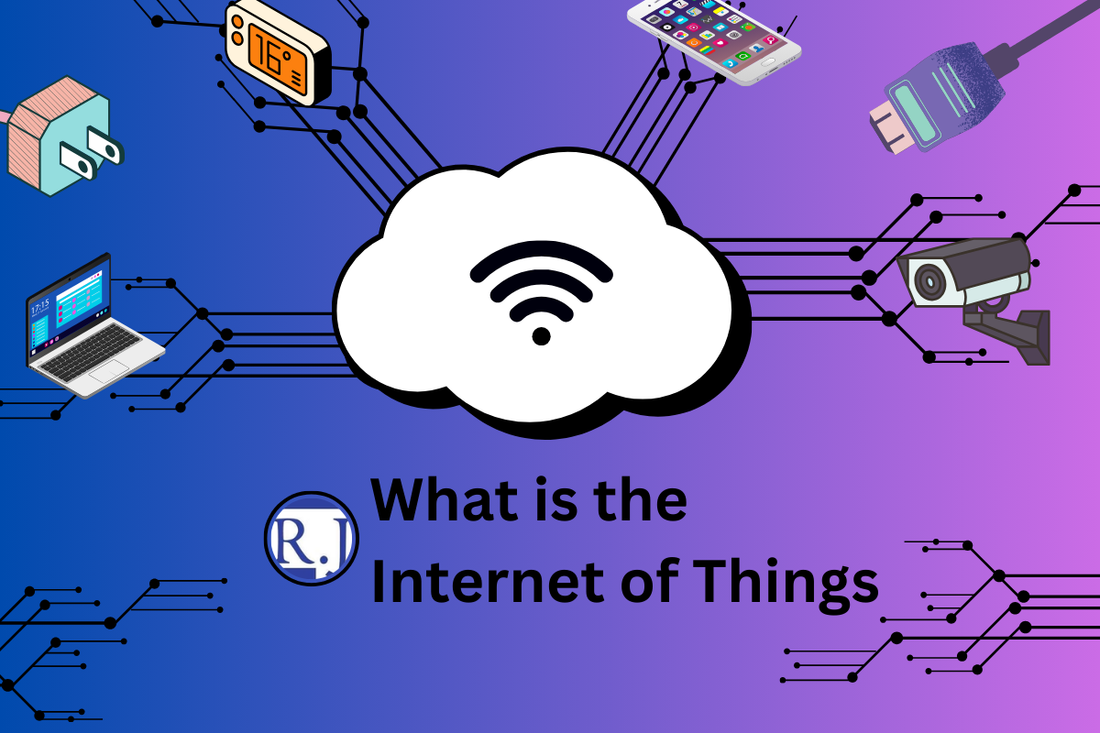
What is the Internet of Things (IoT)?
Share
What is the Internet of Things (IoT)?
The Internet of Things, or IoT, is a collection of internet-enabled devices that are able to collect data from built-in sensors or softwares and send this information to other devices in the network.
What is IoT used for and why is it important?
Like many other modern networking innovations, IoT was expressly designed with the intention to enable seamless communication and data collection between your devices. IoT is able to dramatically enhance efficiency by automating real-time data collection for users to interpret, and in some cases these devices are also able to provide predictive suggestions. All in all, the Internet of Things reduces the need for human effort (and consequently, less human errors!) while optimizing processes.
What are some IoT devices and applications?
Smart Buildings / Smart Homes
Nowadays, most homes are equipped with some form of IoT devices. Perhaps the most common would be the smart thermostat. These thermostats are able to learn your preferences and adjust the temperature accordingly by leveraging their connection to other devices. With the connectivity offered, users like you can remotely access your thermostat controls with devices like a smartphone. As an IoT device, smart thermostats can improve energy efficiency and occupant satisfaction by monitoring the real-time data gathered by sensors.
Other common IoT appliances and systems you may find in a smart building/home include, but are not limited to:
- Refrigerators
- Stoves
- Lighting systems
- Smart doorbells/locks
- Cameras
- Motion sensors
- Smart assistants (e.g. Amazon’s Alexa or Apple’s HomePod)
City Infrastructures
The Internet of Things can, and is, be applied in some city-wide infrastructures like traffic systems or surveillance. With IoT, traffic signals can be adjusted to reduce congestion and identify areas with high levels of stoppage. Surveillance-wise, IoT sensors can be used to detect infractions like driving through a red light or other suspicious activities.
IoT sensors are even used in toll collection by reading the transponder on a vehicle and verifying the payment through the network. IoT applications in city infrastructures are integrated with the intention to improve on efficiency and sustainability to counteract the negative effects of urbanization. This means most of these applications are geared towards basic but essential functions such as:
- Air quality monitoring
- Weather and temperature sensors
- Smart street lighting
- Waste management
- Utility meters
Healthcare
IoT is also heavily used in healthcare applications. Take the Apple Watch for an example. Whereas traditional watches exist solely to tell you the time (sometimes, the data as well), these smart watches are able to track and analyze data such as heartbeat, steps taken, blood pressure, and more. These additional features translate to better body care and attention to health-related decisions.
In professional healthcare settings, IoT can be extensively integrated to allow doctors and nurses faster patient care and identifying potential health issues. Common IoT devices used in this setting include:
- Heart rate monitors
- Ingestible body sensors
- Robotics used in surgeries
- Remote patient monitoring devices (e.g. fitness bands)
- Tagged equipment for tracking
Businesses, Retails, and Customers
Integrating IoT into other aspects of our lives like businesses and shopping has a lot of potential value. Sensors and devices can be used to track foot traffic and engagement time, allowing business owners to gain insights they normally wouldn’t have access to. All the data collected can be used to improve customer experience, forecast shopping trends, develop new products, and optimizing operations.
Edge Computing vs Cloud Computing for IoT?
IoT devices necessitate the need for both edge and cloud computing. Although the appropriate usage may depend on the type of device and its purpose.
Edge computing refers to computing processes being used in tandem and closer proximity of the data collection processes. For IoT devices and sensors, this is extremely common and general practice because edge computing reduces latency by having the computing power operate locally (or on the “edge” of the network). For real-time data collection, this is extremely beneficial not only because of the lower latency, but also because it allows a wider range of coverage. Edge computing is able to extend and process information in areas where cloud computing may have a harder time reaching.
Cloud computing, unlike edge computing, refers to computer processes being delivered and operated from a remote external server. An example of this would be data centers offering cloud services. Although IoT devices don’t typically require cloud, this form of computing also does offer a lot of value when used. Cloud computing is able to store and process larger amounts of data being collected by the IoT devices and sensors – at a more cost-effective price point. Additionally, cloud computing allows other devices to collect and analyze the data collected over the network with ease.
The 4 Key Benefits of IoT
- Efficiency – IoT, by design, enables seamless connection between data collection and device communication. This process can be automated to apply correctional protocols without the need for human interference.
- Real-Time Data – By collecting data regularly, users can develop informed insights and better decisions.
- Cost Savings – The benefits of a comprehensive data collection and analysis is the ability to optimize functions that you may not have considered before. For businesses, they can easily reduce waste and inefficiencies, leaving them more flexibility in spending and saving.
- Predictive Suggestions – Automation is the greatest benefit of connectivity, and predictive suggestion is the icing on top for users to maintain strategic level of control over their devices. These predictions can be incredibly useful when planning new implementations and saving time.
The 4 Downsides of IoT
- Security Risks – The biggest issue with IoT is the potential for data breaches and disruptions from attacks. This lies in the nature of IoT installations, where a compromised device can allow malicious actors to affect the entire network. This problem is magnified if IoT devices aren’t regularly updated with new firmware and stronger encryption.
- Decentralization and Compatibility – IoT is regularly developed and integrated by a variety of companies, but compatibility issues can arise and lead to the aforementioned security risks.
- High Initial Costs – IoT is still a developing technology, and the downside of pioneering the connectivity trend is the initial cost. The development and installation of an extensive IoT network can burn a hole in your wallet, especially if you want to include more complex infrastructure into your project.
- Privacy and Data Collection – IoT devices must collect data, and sometimes this data can be of sensitive nature. Although stricter regulations about data collections are being put into place, concerns about the surveillance still exist and may be important for you.








